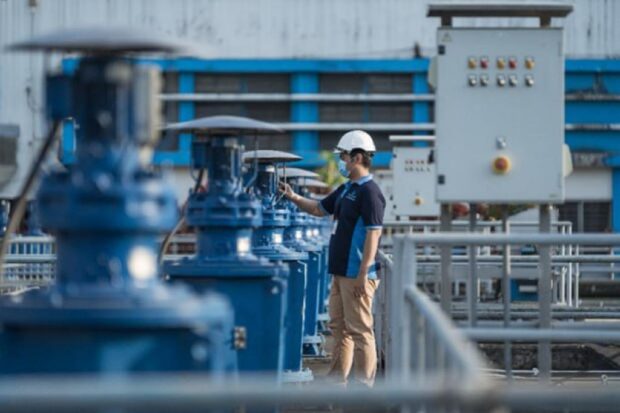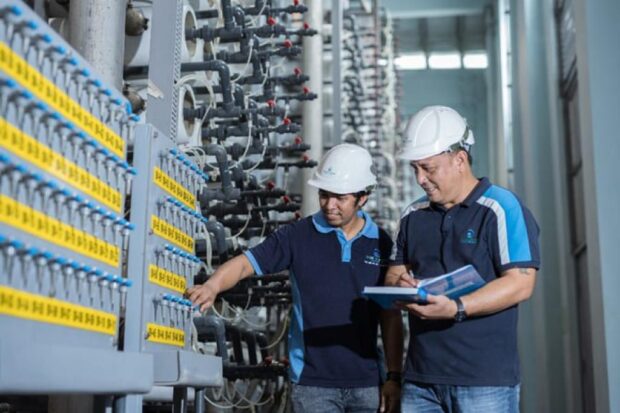Manila Water ensures water remains safe during rainy season

A Manila Water technician checks equipment at the Balara Treatment plant. The East Zone water concessionaire has implemented systems and technologies to mitigate the turbidity in raw water brought by heavy rains.
MANILA, Philippines — The rainy season poses many challenges in supplying safe and potable water, and one of the major concerns is turbidity.
Despite the expected high incidence of water turbidity at the source due to the rains, Manila Water assures its 7.6 million customers that the water they will receive remains clean and safe.
READ: Manila Water ensures water potability in East Zone; ramps up sampling in 2022

Regular equipment checks at the Cardona Treatment Plant. Manila Water’s water treatment plants followed a water quality envelope design that could handle high turbidity in raw water.
Water is considered turbid when there is too much debris that light transmission is restricted. Turbid water will appear cloudy or murky because of suspended particles in it. Heavy rains often result in high turbidity in raw water sources as stronger currents kick up debris such as mud and silt.
The East Zone concessionaire addresses this with a stringent Water Safety Plan implemented in its water treatment plants and network distribution, especially during heavy rains. Manila Water’s Water Safety Plan, which champions the United Nations’ Sustainable Development Goal 6 (Water and Sanitation), is approved by the Metropolitan Waterworks and Sewage System Regulatory Office and the Department of Health (DOH).
Aside from carrying out the standard procedures of coagulation, flocculation, sedimentation, filtration, and disinfection, Manila Water treatment plants follow a water quality envelope design that enables these facilities to handle high turbidity in raw water.
Additionally, Manila Water Laboratory Services (MWLS) collects and analyzes samples year-round from vital points in its supply network to monitor that water quality remains consistent, determine adjustments in treatment processes, and ensure compliance with the national drinking water standards. In 2022, MWLS achieved 109.3% compliance, or 5,841 samplings, which exceeded the requirement set by the Philippine National Standards for Drinking Water (PNSDW) at 5,344.
“Manila Water has already invested heavily in systems and technologies that are implemented in its water sources and treatment plants to mitigate the high turbidity brought by heavy rains. On top of that, our state-of-the-art laboratory services see to it that the water quality in our distribution network passes the government standards for drinking water,” Manila Water Director of Corporate Communications Affairs Group Jeric Sevilla said.